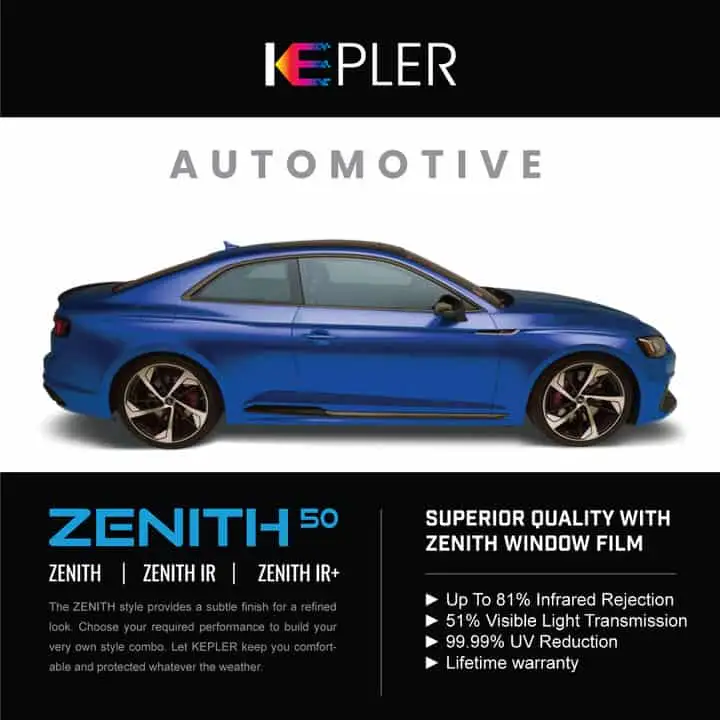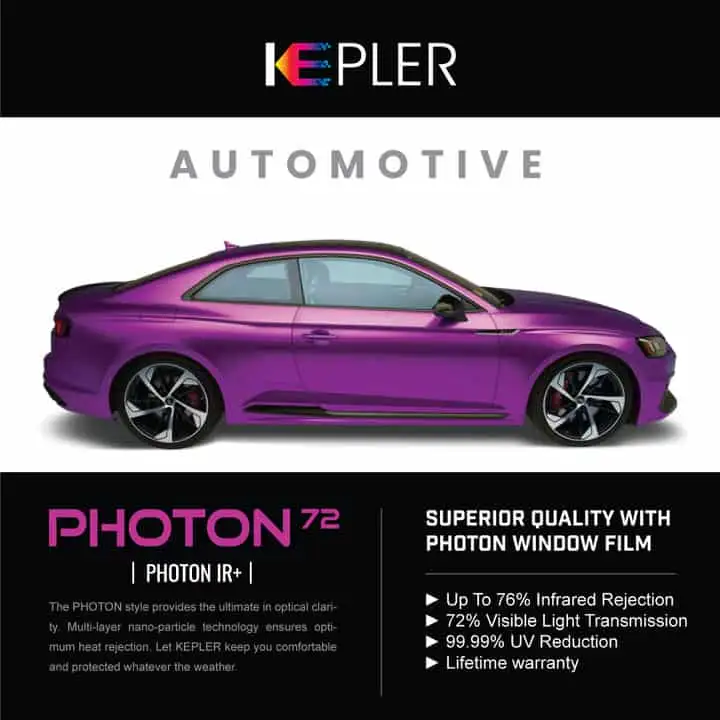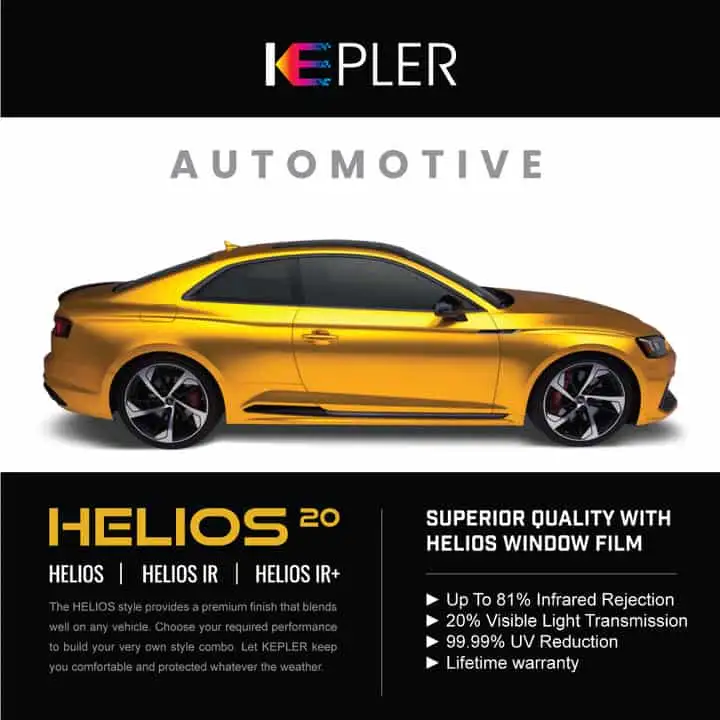Window Tinting 101: How to Choose the Correct Tint Percentage for Your Vehicle
When tinting the windows of your car, it’s important to choose the right percentage of tint for your needs and tastes. In this post, we’ll go through the various tint percentages available, the advantages and disadvantages of each, and how to make the best decision for your vehicle.
Understanding Tint Percentages
The tint percentage is the amount of visible light that the tint film allows. The higher the percentage, the more light can flow through the film. The lower the percentage, the less light can pass through the film. In other words, a 5% will be darker than a 35%.
Standard Tint Percentages That Are Available
For automotive car windows, there are numerous tint percentages available, including:
5% tint: This is the darkest tint available, blocking 95% of visible light. This option is normally only accessible for off-road use, as it is unlawful in most jurisdictions to use it on public highways for front doors or windshields. Back windows on SUVs and trucks may be legal.
20 % tint: This option, which blocks 80% of visible light, is popular with many car owners. It gives a large amount of privacy and sun protection without making driving too difficult but you have to check with your local authorities if it’s legal.
35% tint: This option filters 65% of visible light and is ideal for people seeking modest privacy and sun protection, and is legal in most states, but I would again check with your local authorities.
50% tint: One of the lightest tint options available, it blocks 50% of visible light. It is a great choice for people who want some privacy and protection from the sun but don’t want to completely darken the car.
and finally the
70% is the lightest window film that is typically available in ceramic window film and is primarily used by those who want only UV and Infrared Radiation protection, as it blocks 99% of UV and approximately 70% of IR.
The Advantages and Disadvantages of Various Tint Percentages
Each hue % has its own set of advantages and disadvantages.
Here’s a rundown of what each choice has to offer:
5% tint: This choice provides optimal privacy and sun protection, as well as a sleek and attractive appearance for your vehicle. The disadvantages include trouble seeing when driving, particularly at night, and potential legal issues if used on public roadways.
20% tint is a good choice because it gives you privacy and protection from the sun without making it hard to drive. However, for certain car owners, it may not give enough privacy or sun protection.
35% tint: This choice gives moderate privacy and sun protection while also giving your vehicle a fashionable appearance. However, for certain car owners, it may not give enough privacy or sun protection.
50% tint: This option provides modest privacy and sun protection and is ideal for individuals who wish to make a subtle modification to the appearance of their vehicle. However, for certain car owners, it may not give enough privacy or sun protection.
Choosing the Correct Tint Percentage for Your Vehicle
When deciding on the best tint percentage for your car, it’s important to consider your specific needs and preferences. Consider how much privacy and sun protection you require, as well as how much visibility you are ready to lose when driving, and your driving habits, are you driving mostly at night time? evenings or early mornings? rainy area? …and many more.
You should also examine your state’s laws regarding tint percentages on car windows. Many states have stringent laws regulating the maximum tint percentage permitted on public roads.
Finally, the appropriate tint percentage for your car is determined by your demands and tastes, as well as state laws. Understanding the various tint percentages available, as well as their benefits and downsides, allows you to make an informed decision and select the best solution for your vehicle.





